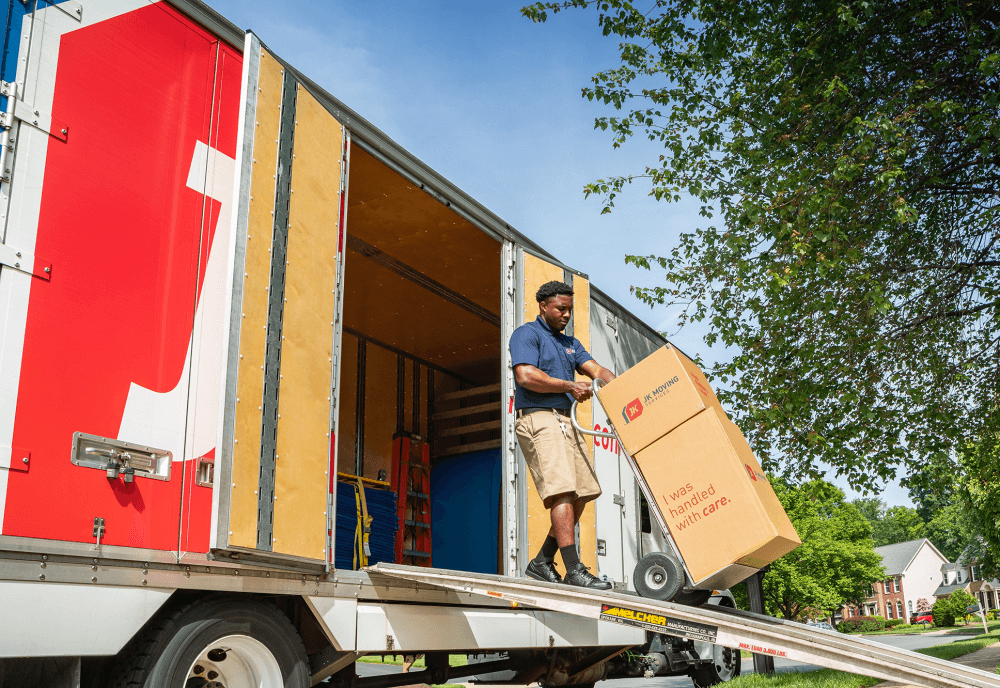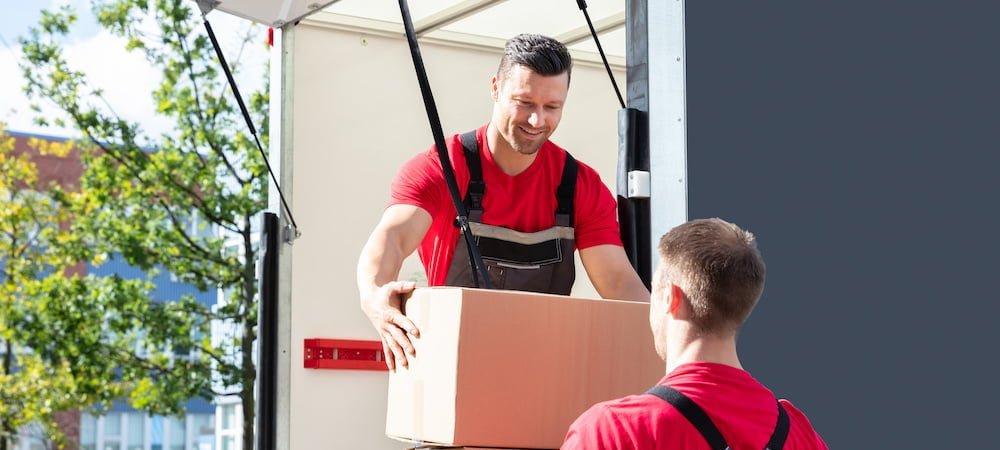Movers With GPS Tracking: Ways to Pick the Best Moving Companies for Your Next Move
Student Movers: Specialist Moving Specialists Can Assist Make Your Shift Smooth And Stress-Free
History and Development of Moving Services
The Dawn of Moving: From Muscle to Machines
Photo this: a handful of strong men transporting heavy trunks on wood carts, navigating cobblestone streets with sweat and decision. Before the modern moving industry took shape, moving was a ruthless, labor-intensive job. In ancient times, relocation typically indicated depending on sheer physical strength and primary tools. The absence of specialized services indicated families and merchants needed to coordinate every detail themselves, typically risking damage or loss.
However isn't it fascinating how requirement fuels development? As cities broadened and commerce flourished, the need for effective, trustworthy moving services became glaringly obvious. Enter the era of horse-drawn wagons and later, motorized automobiles, which changed how possessions took a trip from one place to another.
Industrial Revolution: The Catalyst for Modification
The 19th century's commercial boom reshaped numerous facets of life, including how people moved. Suddenly, metropolitan migration rose, and with it, the need for professional movers skyrocketed. No longer was moving a simple chore; it developed into a specific service offering:
- Packaging proficiency to safeguard vulnerable products
- Organized packing methods making the most of space
- Transportation solutions customized to various ranges
This period marked the birth of companies devoted entirely to moving, preparing for today's complex logistics and customer-centric techniques.
Technological Developments and Their Effect
Can you envision moving without modern devices? The development of hydraulic lifts, forklifts, and pallet jacks transformed the industry over night. Suddenly, movers might deal with large furniture and heavy devices with ease, decreasing injuries and improving effectiveness.
The combination of digital technology triggered a brand-new wave of innovation. GPS tracking, online reservation platforms, and real-time stock management have become staples in the moving services landscape. These tools not only improve openness but likewise empower consumers to stay connected and informed throughout their moving journey.
Secret Turning Points in Moving Provider Advancement
| Era | Advancement | Significance |
|---|---|---|
| Ancient Times | Manual work and fundamental carts | Foundation of moving as a requirement |
| 19th Century | Horse-drawn wagons and packing services | Birth of professional moving business |
| 20th Century | Motorized trucks and mechanized equipment | Increased effectiveness and scale |
| 21st Century | Digital combination and GPS innovation | Enhanced consumer experience and logistics |
Reflections on the Journey
Reflecting on the development of movers, one might wonder: how did a basic act of carrying belongings become an advanced market? It's a tale of durability, adaptation, and continuous enhancement. From the sweat-soaked streets of old to the precision-driven operations of today, the history of moving services is as vibrant as the people who count on them.
Next time you load a box or hire a mover, consider the layers of history ingrained in every step. The journey of movers encapsulates human resourcefulness, changing what was when a complicated task into a smooth experience.
Checking out the Spectrum of Moving Providers
When the time comes to shift your life from one address to another, the variety of moving services readily available can seem like browsing a labyrinth. Do you need a basic loading and discharging team, or does your relocation demand the skill of complete packaging and unpacking? Understanding the nuances can conserve hours of disappointment and unexpected costs.
Typical Kinds Of Moving Services
- Regional Moves: Developed for movings within a city or urbane location, these services normally operate on a hourly basis, ideal for short distances.
- Long-Distance Moves: Covering moves beyond 100 miles, these need more coordination, from logistical preparation to protect transport, often priced by weight and range.
- Full-Service Moves: Movers handle whatever-- packing, loading, transferring, unloading, and sometimes even unloading. Suitable for those pressed for time or energy.
- Self-Service Relocations: You pack and load your valuables, while the business deals with transportation and discharging. A middle ground offering cost savings and some benefit.
- Specialty Moves: For vulnerable, bulky, or valuable products like pianos, antiques, or art work, needing specific devices and knowledge.
Expert Tips to Browse Your Moving Service Choices
- Prioritize Flexibility: Pick a service that adjusts to unforeseen hold-ups or last-minute changes-- rigid schedules can turn a smooth move into a logistical headache.
- Inspect Insurance Options: Not all moving business offer the very same level of security. Understanding your protection can avoid distress if something goes awry.
- Demand Detailed Stocks: A precise product list prevents disputes and guarantees responsibility, particularly when dealing with long-distance or specialized moves.
- Consider Time of Year: Seasonal demand can affect schedule and rates. Early reserving throughout off-peak seasons may approve better service and versatility.
- Inquire About Packing Products: Premium boxes, bubble wrap, and padding can be the distinction in between a scratched treasure and a beautiful arrival.
Table: Service Characteristic Compared
| Service Type | Who Packs? | Transportation Mode | Normal Pricing Design | Suitable For |
|---|---|---|---|---|
| Regional Move | Consumer or Movers | Truck | Per hour | Brief distances, little loads |
| Long-Distance Move | Movers | Truck or Container | Weight & & Range | Cross-state or local relocation |
| Full-Service Move | Movers | Truck | Flat or Weight-Based | Time-sensitive, high-stress relocations |
| Self-Service Move | Consumer | Truck or Container | Flat or Hourly | Cost-conscious, hands-on movers |
| Specialized Move | Movers with competence | Specialized Equipment | Custom-made Quote | Delicate or valuable items |
The Unseen Complexity Behind Each Choice
Have you ever wondered why moving seems simple and easy on tv but becomes a cascade get more info of last-minute decisions in genuine life? The fact depends on the complexities of each service type. For instance, full-service relocations may look like a high-end, but the proficiency associated with packing delicate treasures or taking apart large furnishings is a craft refined over years. Choosing for a self-service move might conserve cash, but it demands a keen understanding of how to pack effectively-- did you understand that stacking strangely shaped boxes improperly can cause internal moving during transit, trashing vulnerable contents?
Choosing the right kind of moving service is not simply about benefit-- it's about protecting your memories and investments. What's your move's story going to be?

Packaging and Moving Methods
Ever tried to fit a suitcase that simply will not close? That's the sort of puzzle professional movers solve daily-- but on a much bigger scale. The secret lies not in strength but in tactical placement and intelligent use of area. Packing isn't merely about stuffing products into boxes; it's an art type where every inch counts.
Layering for Success
Envision a painter layering colors to create depth. When packing, begin with much heavier products at the bottom, then cushion with softer materials like bubble wrap or towels. This avoids damage and maximizes box stability. Strangely shaped items can slip into gaps, decreasing lost space.
- Wrap fragile products separately with tissue or foam to avoid scratches.
- Use clothes as padding-- it's both effective and environment-friendly.
- Fill empty areas with packing peanuts or crumpled paper to decrease motion.
Identifying: The Unsung Hero

What great is perfect packaging if you spend hours searching through boxes? Comprehensive labeling is a game-changer. Rather of vague tags like "Cooking area," try this approach:
| Label | Description | Concern |
|---|---|---|
| Vulnerable - Glass wares | Handle with care, consists of fragile products | High |
| Essentials - First Night | Items needed instantly after moving | Urgent |
| Books - Study Space | Stacked, heavy books | Medium |
Strategic Packaging Tips
- Disassemble large furniture and keep screws in identified bags taped to the pieces.
- Use uniform box sizes when possible-- stacking ends up being easier and safer.
- Do not overpack boxes; weight limitations exist for a factor. Goal for 40-50 pounds max.
- Wrap furniture edges with moving blankets to prevent scratches throughout transit.
- Seal boxes with high-quality packing tape-- double layers on the bottom are vital.
Why do some movers swear by a color-coded system? Because it removes uncertainty on moving day. Designate each room a color and mark boxes accordingly. This little action can save hours when discharging and unloading.
Packaging and moving demand accuracy-- like a chess video game where every move counts. Have you ever saw how some movers manage large products effortlessly? They leverage angles and pivot indicate navigate tight corners without damage. It's not muscle; it's technique.
Hidden Struggles Behind the Moving Van Doors
Ever viewed a group of expert movers carry a grand piano through a narrow entrance and questioned how they pull it off without a scratch? The art of moving isn't simply muscle and trucks; it's a fragile dance with unpredictability. Weather condition can turn from a sunlit true blessing to a torrential hazard in minutes, turning a straightforward drive into a logistical labyrinth.
One well-known obstacle is the labyrinthine layout of some homes or apartments. Staircases too tight for dollies, entrances narrower than standard boxes, or elevators that hardly fit a sofa-- these physical peculiarities require inventive services on the area. Movers typically resort to unconventional techniques like taking apart furnishings or employing customized cushioning to protect both the item and the property.
Precision Packing: More Than Simply Wrapping
It's appealing to believe packaging is simply packing boxes, but the reality is a complicated puzzle of weight distribution and fragility. Movers should anticipate how products will move during transit-- a miscalculation can mean shattered heirlooms or dinged up appliances. The secret weapon? Strategic layering and using materials with specific shock-absorbing qualities.
- Bubble wrap is basic, however rotating it with foam sheets can dramatically reduce impact damage.
- Heavy items address the bottom; delicate ones nestle on top, cushioned by soft fabrics.
- Identifying boxes not just by contents however by dealing with guidelines ensures quicker, much safer unloading.
Another less discussed stress is the mental toll. The clock ticks relentlessly, and every delay ripples through tight schedules. Staying calm in the middle of chaotic last-minute changes requires psychological agility and team synergy.
Traffic Jams and Timing: The Undetectable Opponents
| Challenge | Expert Method | Effect |
|---|---|---|
| Urban blockage | Path optimization apps and flexible scheduling | Minimizes hold-ups and fuel consumption |
| Parking constraints | Pre-arranged authorizations or strategic parking nearby | Prevents fines and time loss |
| Unforeseeable weather condition | Waterproof coverings and contingency strategies | Maintains the condition of items and devices |
Do you truly understand what it takes to keep a moving day on track? It's not practically strength or stamina; it has to do with foresight, adaptability, and a deep understanding of every piece of the puzzle. The next time you see movers at work, remember: behind that smooth operation lies a series of determined maneuvers and fast thinking that couple of ever notification.